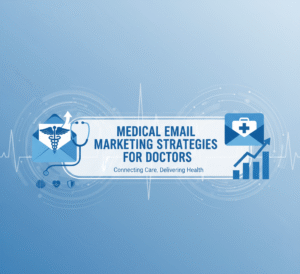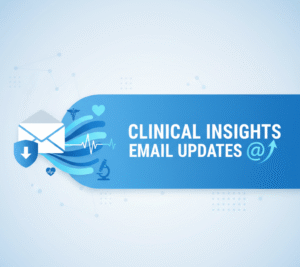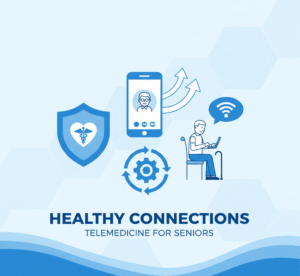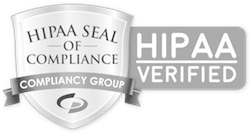“Build an effective online presence for radiology services by leveraging targeted digital marketing strategies to educate, engage, and attract more patients to your practice.”
In today’s fast-paced digital world, a strong online presence isn’t just a luxury for businesses; it’s a fundamental necessity. This holds especially true for healthcare providers, including radiology services. Patients today often begin their healthcare journey with an online search. They seek information, read reviews, and compare options before scheduling an appointment. For radiology practices, establishing a robust online presence means more than simply having a website. It involves a strategic, multi-faceted approach to digital marketing that educates, engages, and ultimately attracts more patients.
This article delves into the core components of building an effective online presence for radiology services. We will explore key strategies such as local SEO, targeted content marketing, strategic social media engagement, and proactive reputation management. Our focus remains on real, valuable insights and best practices specifically tailored to the medical field. We will highlight how InvigoMedia supports radiology practices in enhancing online visibility, drawing in more patients, and fostering brand growth through customized, results-driven marketing solutions.
Understanding the Modern Patient Journey
Before diving into specific strategies, it’s crucial to understand how modern patients find healthcare services. The journey typically begins online. Someone might experience a symptom or receive a referral for an imaging scan. Their immediate next step often involves pulling out a smartphone or opening a laptop. They will search for “radiology near me,” “MRI scan cost,” or “best imaging center in [city].”
These initial searches are critical. If your practice does not appear prominently in these results, you become invisible to a significant portion of your potential patient base. Beyond just finding a service, patients also look for reassurance. They want to see what others say about a practice, learn about the technology used, and understand the expertise of the radiologists. Your online presence must address these needs comprehensively, building trust and demonstrating your commitment to patient care.
Local SEO: Your Foundation for Visibility
Local Search Engine Optimization (SEO) is a vital component of an online strategy for any medical practice, including radiology services. Patients usually seek healthcare providers close to their home or workplace. Local SEO ensures your practice ranks high in geographical searches. This means when someone in your service area searches for “X-ray clinic,” “ultrasound services,” or “diagnostic imaging,” your practice appears prominently.
Google My Business Optimization
Your Google My Business (GMB) profile acts as your digital storefront. It is the first thing many prospective patients see. Optimizing this profile is not just important; it’s non-negotiable.
First, claim and verify your GMB listing. Many businesses overlook this crucial initial step. Once verified, provide comprehensive and accurate information. Include your business name, address, phone number, and website URL. Consistency across all online directories is paramount. Inaccurate information confuses both search engines and potential patients.
Next, populate your GMB profile with high-quality images. These should showcase your facility, equipment, and friendly staff. Visuals make your listing more appealing and trustworthy. Consider adding virtual tours in the “Services” section to list all your radiology services. Think about specific keywords patients might use, such as “mammography,” “CT scans,” “pediatric radiology,” or “interventional radiology.” The more detailed you are, the better.
Regularly post updates to your GMB profile. Share information about new services, special offers, updated hours, or health tips. These posts keep your listing active and signal to Google that your business is relevant and current.
Niche-Specific Keyword Research
Effective local SEO starts with thorough keyword research. Don’t just target broad terms. Instead, focus on niche-specific keywords relevant to your radiology services. Think about how patients specifically search for your offerings.
Consider variations like “24-hour MRI near me,” “walk-in X-ray [city name],” or “affordable ultrasound [neighborhood].” Also, include geographical modifiers. These could be “radiology services Downtown [City],” “imaging center North [City],” or “diagnostic imaging [zip code].”
Investigate long-tail keywords. These are longer, more specific phrases that users type into search engines. While they might have lower search volumes, they often indicate higher intent. For example, “what to expect during an MRI scan in [city]” is a long-tail keyword. Someone searching this phrase is likely closer to making a decision. Integrating these keywords naturally into your website content and GMB posts improves your chances of capturing highly qualified leads.
Building Local Citations and Backlinks
Local citations refer to any online mention of your business’s name, address, and phone number (NAP). These appear on directories, business listings, and social media platforms. Ensure your NAP information is consistent everywhere. Inconsistencies can confuse search engines and hurt your local ranking.
Seek out relevant local directories and healthcare-specific directories. Examples include Yelp, Healthgrades, Zocdoc, and local chamber of commerce websites. The more consistent and numerous your citations, the more authoritative your practice appears to search engines.
Backlinks are another critical factor. These are links from other reputable websites pointing back to your site. High-quality backlinks from other healthcare providers, local businesses, or community organizations signal to Google that your website is trustworthy and relevant. Focus on earning links naturally through valuable content and local partnerships rather than buying them.
Content Marketing: Educating and Engaging Patients
Content marketing positions your radiology practice as an authoritative source of information. It addresses patient concerns, explains complex procedures, and builds trust before a patient even steps through your doors. This strategy involves creating and distributing valuable, relevant, consistent content to attract and retain a clearly defined audience.
Blog Posts and Educational Articles
Your practice’s blog should be a cornerstone of your content marketing efforts. Use it to answer common patient questions. For example, write an article titled “Preparing for Your Mammogram: A Step-by-Step Guide ” or “Understanding the Difference Between a CT Scan and an MRI.”
Focus on topics that reduce patient anxiety. Many people feel nervous about medical procedures. Explaining the process in clear, easy-to-understand language helps alleviate these fears. Discuss the benefits of early diagnosis, the safety of modern imaging techniques, and what patients should expect during and after their visit.
Update your blog regularly with fresh content. This keeps your website dynamic and provides new material for search engines to index. Each blog post is an opportunity to rank for specific keywords and draw in organic traffic.
Videos and Infographics
Not all patients prefer reading long articles. Visual content performs exceptionally well in the healthcare sector. Videos can demystify procedures. A short video tour of your facility or a simple animation explaining how an X-ray works can be incredibly effective.
Consider creating a “Day in the Life of a Radiologist” video. This will humanize your practice and showcase the expertise of your staff. Patient testimonials in video format are also powerful trust-builders.
Infographics offer a visually appealing way to present complex information. Use them to explain diagnostic pathways, highlight statistics about specific conditions, or outline preparation steps for various scans. These visual assets are also highly shareable on social media, extending your reach.
Patient Testimonials and Success Stories
Authentic patient testimonials are among your most potent marketing tools. People trust personal experiences more than any advertising claim. Encourage satisfied patients to share their stories.
Display these testimonials prominently on your website, GMB profile, and social media channels. You can use text testimonials, but video testimonials are even more impactful. Hearing a real patient describe their positive experience at your facility builds immense credibility.
Focus on stories that highlight not just the quality of your imaging, but also the compassionate care, efficient service, and clear communication they received. These narratives resonate deeply with prospective patients.
Social Media: Connecting and Communicating
Social media is no longer just for personal use; it’s an essential platform for medical practices to connect with their community. It offers direct communication with patients, allowing you to share valuable information, build brand awareness, and foster a sense of community. However, healthcare social media requires a thoughtful, professional approach.
Choosing the Right Platforms
Not all social media platforms suit every radiology practice. Focus your efforts where your target audience spends their time. Facebook generally has a broad demographic and is helpful for community engagement and sharing longer updates. Instagram is highly visual, making it ideal for sharing images of your facility, educational infographics, and short videos. LinkedIn is excellent for professional networking, reaching referring physicians, and recruiting staff.
Avoid being active on too many platforms if you lack the resources. It is better to excel on one or two platforms than to spread yourself too thin across many.
Content Strategy for Social Media
Your social media content needs to be engaging and informative. Here are some ideas:
- Educational Snippets: Break down complex medical terms into simple, digestible posts. Explain conditions, procedures, or the importance of certain screenings.
- Behind-the-Scenes: Share photos or short videos of your equipment, your waiting room, or your staff at work. This humanizes your practice and makes patients feel more comfortable.
- Health Awareness Campaigns: Participate in national health observances (e.g., Breast Cancer Awareness Month). Share relevant statistics, screening guidelines, and success stories.
- Patient Success Stories: With patient consent, share anonymized success stories. Focus on the positive outcomes and improved quality of life.
- Q&A Sessions: Host live Q&A sessions where radiologists answer common questions about imaging procedures. This builds trust and positions your practice as an expert resource.
- Community Involvement: Share posts about your practice’s involvement in local community events or charity work. This showcases your commitment to the community.
Remember to use high-quality images and videos. Visual content significantly increases engagement on social media.
Engagement and Interaction
Social media is a two-way street. Don’t just broadcast information; actively engage with your audience. Respond promptly to comments and messages. Address patient concerns publicly and professionally (while always adhering to HIPAA regulations and privacy).
Encourage patients to share their positive experiences. Run polls or ask questions to spark conversations. Use social media to build a loyal community around your practice. This engagement fosters patient loyalty and can lead to word-of-mouth referrals.
Adhering to HIPAA and Privacy Guidelines
Social media carries strict legal and ethical responsibilities for healthcare providers. The Health Insurance Portability and Accountability Act (HIPAA) governs patient privacy. Never share any patient-specific information, even inadvertently. Be extremely cautious when responding to comments or questions that might reveal protected health information (PHI).
Train your staff on social media best practices and HIPAA compliance. Having a designated person or team manage your social media presence. It is often advisable to develop clear social media policies for your practice. This protects both your patients and your organization.
Reputation Management: Building Trust and Credibility
In the digital age, your online reputation is your most valuable asset. Patients rely heavily on online reviews to make healthcare decisions. Proactive reputation management involves monitoring, responding to, and generating positive reviews.
Monitoring Online Reviews
Set up alerts to monitor mentions of your practice across the web. This includes review sites like Google Reviews, Yelp, Healthgrades, and Zocdoc. Tools exist that can help automate this process, ensuring you are aware of new reviews as soon as they are posted.
Regularly check what patients say about your practice. Look for recurring themes, both positive and negative. These insights can provide valuable feedback for improving your services and patient experience.
Responding to Reviews (Positive and Negative)
Always respond to reviews, whether positive or negative. Acknowledge positive feedback with a sincere thank you. This shows appreciation for your patients and reinforces their good experience.
Addressing negative reviews requires particular care and professionalism. Never become defensive or argumentative. Respond promptly and express empathy. Offer to take the conversation offline to resolve the issue privately. For example, “Thank you for your feedback. We are sorry to hear about your experience. Please contact our office manager at [phone number] so we can address your concerns directly.”
Due to privacy regulations, never admit fault or discuss specific patient details in a public response. Your goal is to show that your practice cares about patient satisfaction and takes feedback seriously. A professional, empathetic response can often mitigate the damage of a negative review and even turn a dissatisfied patient into a loyal one.
Encouraging Patient Reviews
The best way to combat negative reviews is to generate many positive ones. Make it easy for satisfied patients to leave reviews.
Consider using patient engagement tools that send automated review requests after an appointment. Place clear calls to action on your website and in your waiting room, directing patients to your preferred review platforms.
Encourage your staff to politely ask satisfied patients for reviews at the end of their visit. A simple “If you had a positive experience today, we would greatly appreciate it if you could share your feedback online” can go a long way. However, never offer incentives for reviews, as this can violate platform guidelines and ethical standards. Focus on providing exceptional service, and the positive reviews will naturally follow.
Patient Engagement Online: Streamlining the Experience
An effective online presence extends beyond marketing and involves streamlining the patient experience through digital tools. Easy access to information and convenient communication options improve patient satisfaction and reduce administrative burden.
Online Scheduling and Appointment Reminders
Offer online scheduling options on your website. Many patients prefer the convenience of booking appointments outside of regular office hours. Integrate this feature seamlessly with your existing scheduling system.
Implement automated appointment reminders via text message or email. This will significantly reduce no-shows and help keep your schedule full. Patients appreciate these reminders, which allow them to remember their appointments and prepare as needed.
Patient Portals and Secure Communication
A secure patient portal provides a valuable resource for patients. Patients can access their imaging reports, view billing statements, request appointments, and communicate securely with your staff through the portal. This empowers patients with greater control over their healthcare information and fosters better communication.
Ensure your portal is user-friendly and mobile-responsive. Patients expect the same level of digital convenience from their healthcare providers as other service providers.
Tele-Radiology Consultations (if applicable)
While radiology is primarily an in-person service, some aspects, like consultation or follow-up discussions, can occur virtually. If your practice offers tele-radiology consultations or second opinions, highlight this on your website. This expands your reach and provides convenience for patients who live further away or have mobility challenges.
Growing Your Brand: Beyond the Basics
Building an online presence is an ongoing process. Once you establish the foundational elements, you can explore more advanced strategies to grow your brand and reach further.
Professional Networking and Physician Referrals
Radiology practices rely heavily on referrals from other physicians. Your online presence can support and enhance these referral networks.
Use platforms like LinkedIn to connect with referring physicians. Share insights, research, and news relevant to their practice areas. Position your radiologists as experts in their sub-specialties.
Your website can also serve as a resource for referring physicians. Provide easy access to referral forms, contact information for quick consultations, and details about your specialized services and equipment. Make it easy for doctors to choose your practice for their patients.
Public Relations and Media Outreach
Proactive public relations can significantly boost your brand’s reputation and visibility. Share this news if your practice invests in new, cutting-edge equipment or if one of your radiologists publishes a significant study.
Contact local media outlets, health publications, or community news sources. Offer your radiologists as expert commentators on relevant health topics. Appearing in local news stories or health segments builds credibility and extends your reach to a broader audience.
Data-Driven Marketing
Effective digital marketing relies on data. Use analytics tools to track your website traffic, patient demographics, conversion rates, and marketing campaign performance.
Analyze which keywords drive the most traffic, which content pieces resonate best with your audience, and where your patients are coming from. Use this data to refine your strategies, allocate your marketing budget effectively, and continuously improve your online presence. Data-driven decisions lead to better outcomes and a higher return on investment.
InvigoMedia: Your Partner in Digital Growth
Building and maintaining a compelling online presence requires specialized knowledge, consistent effort, and a deep understanding of the healthcare landscape. Many radiology practices lack the time, resources, or in-house expertise to effectively manage complex digital marketing strategies. This is where a specialized medical digital marketing company like InvigoMedia becomes an invaluable partner.
At InvigoMedia, we understand the unique challenges and opportunities within the medical field, particularly for radiology services. We don’t offer generic marketing solutions; we craft customized, results-driven strategies explicitly tailored to your practice’s needs and goals.
Here’s how we support radiology practices in enhancing their online visibility, attracting more patients, and growing their brand:
- Strategic Planning: We begin by understanding your practice, target audience, and competitive landscape. We then develop a comprehensive digital marketing strategy that aligns with your business objectives. This includes identifying key performance indicators (KPIs) and setting realistic, measurable goals.
- Local SEO Expertise: We implement advanced local SEO techniques to ensure your practice ranks prominently in local search results. These include meticulous Google My Business optimization, hyper-local keyword research, and building a strong network of local citations and backlinks, all of which aim to connect you with patients in your service area.
- Content Marketing Development: We create high-quality, engaging, and informative content for radiology patients and referring physicians. This includes SEO-optimized blog posts, educational articles, compelling video scripts, and eye-catching infographics that educate patients, build trust, and establish your practice as a thought leader.
- Social Media Management: We manage your social media presence across relevant platforms, crafting engaging posts, interacting with your audience, and running targeted campaigns that comply with healthcare regulations. Our approach builds community and enhances your brand’s reputation online.
- Reputation Management Services: We proactively monitor your online reviews, implement strategies to encourage positive patient feedback, and provide expert guidance on responding to positive and negative comments. We help you maintain a stellar online reputation that instills patient confidence.
- Paid Advertising Campaigns: Beyond organic strategies, we can design and manage targeted paid advertising campaigns on platforms like Google Ads and social media. These campaigns precisely reach your ideal patient demographic, driving immediate traffic and patient inquiries.
- Website Optimization and Design: A high-performing website is central to your online presence. We ensure your website is visually appealing but also user-friendly, mobile-optimized, and conversion-focused. We implement technical SEO best practices to ensure your site loads quickly and provides an excellent user experience.
- Analytics and Reporting: We provide transparent reporting on your marketing performance. We track key metrics, analyze data, and offer actionable insights, demonstrating the return on your marketing investment and continuously refining strategies for optimal results.
By partnering with InvigoMedia, radiology practices can offload the complexities of digital marketing, allowing them to focus on what they do best: providing exceptional patient care. Our specialized expertise ensures your online presence is visible and effective, leading to sustained patient growth and brand recognition.
Conclusion
Building an effective online presence for radiology services is an ongoing journey, not a destination. It requires a dedicated commitment to digital strategies prioritizing patient education, engagement, and trust. By mastering local SEO, consistently delivering valuable content, engaging thoughtfully on social media, and proactively managing your online reputation, your radiology practice can significantly enhance its visibility and attract a steady stream of new patients.
Remember, the goal is to be where your patients look, which is increasingly online. A strong digital footprint increases appointments and reinforces your practice’s standing as a reputable, patient-focused healthcare provider. For practices seeking to amplify their digital reach and achieve measurable growth, partnering with a specialized expert like InvigoMedia provides the strategic guidance and execution power needed to thrive in today’s competitive healthcare landscape. Invest in your online presence; it is an investment in the future of your radiology service.
Frequently Asked Questions (FAQs)
Q1: Why is an online presence so crucial for radiology services specifically?
Patients today start their healthcare search online. Radiologists often seek convenience, specific services (like pediatric imaging or particular types of scans), and trusted providers. A strong online presence ensures your practice is visible when patients are actively searching, provides them with necessary information, and builds trust through reviews and educational content. It’s how you get found and chosen.
Q2: What’s the difference between general SEO and local SEO for a medical practice?
General SEO aims to improve your ranking for broad keywords across a wide geographical area. Local SEO, however, focuses on optimizing your online presence to attract patients in your specific service area. Local SEO is more critical for radiology because most patients seek services near their home or workplace. Local SEO involves optimizing your Google My Business profile, building local citations, and targeting geographically specific keywords.
Q3: How can a radiology practice use social media effectively without violating patient privacy (HIPAA)?
Effective social media use for radiology practices focuses on general education, health awareness, behind-the-scenes glimpses of your facility, and showcasing your team’s expertise. You must never share patient-specific or protected health information (PHI) on social media. Avoid discussing patient cases, even anonymously. Train your staff on HIPAA compliance, and have clear social media policies. If a patient asks a personal question, direct them to a private channel like a secure patient portal or a phone call.
Q4: Should I respond to negative online reviews? If so, how?
Yes, you should always respond to both positive and negative reviews. For negative reviews, respond promptly, professionally, and empathetically. Express regret for their unsatisfactory experience and offer to take the conversation offline to resolve the issue directly. For example, provide a phone number for your office manager. Due to privacy regulations, do not get defensive, argue, or discuss patient-specific details in your public response. Your response shows that your practice cares about patient satisfaction.
Q5: What kind of content should a radiology practice create for its website and blog?
Focus on content that educates patients, answers their questions, and addresses their anxieties. This includes blog posts explaining standard procedures (e.g., “What to Expect During an MRI”), articles on preparation for scans, information about specific conditions, and the benefits of early diagnosis. You can also create videos showcasing your facility, infographics explaining complex concepts, and patient testimonials (with consent). The goal is to establish your practice as a trusted source of information.
Q6: How long does it take to see results from digital marketing efforts for radiology services?
The timeline for seeing results can vary depending on the strategies implemented and the competitive landscape. Some efforts, like paid advertising, can yield quicker results in terms of immediate traffic and inquiries. Organic strategies like SEO and content marketing take longer, typically 3 to 6 months or more, to show significant improvements in search rankings and organic traffic. Consistency and patience are key. Continuous optimization and adaptation based on data will lead to long-term success.
Q7: Why should a radiology practice consider hiring a specialized medical digital marketing company like InvigoMedia?
Hiring a specialized company like InvigoMedia saves your practice time and resources, allowing your team to focus on patient care. These companies possess deep expertise in healthcare marketing and understand the unique regulatory environments (like HIPAA), patient behaviors, and referral pathways. They offer customized strategies, advanced tools, and continuous optimization based on performance data, leading to more effective campaigns and a better return on investment than managing complex digital marketing in-house without dedicated expertise.













